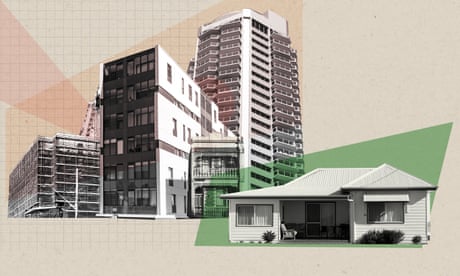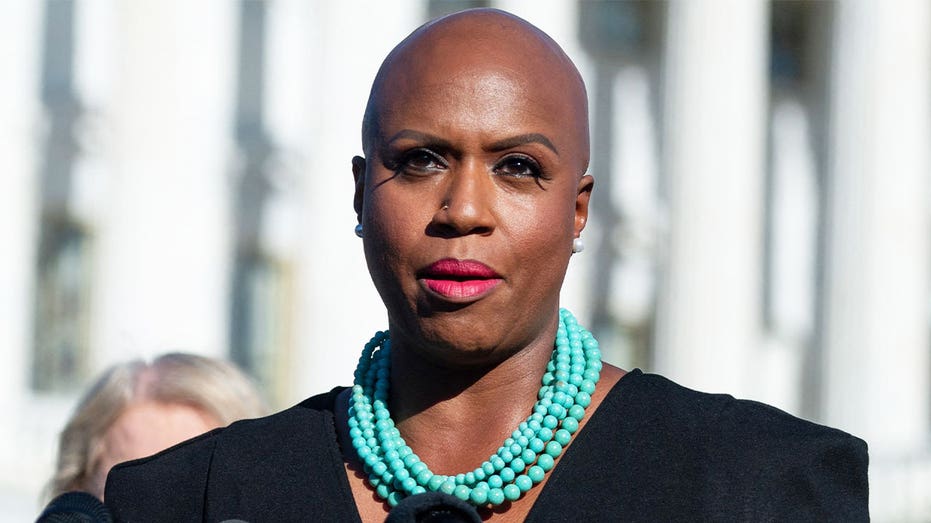- by foxnews
- 25 Nov 2024
Living with density: will Australia’s housing crisis finally change the way its cities work?
Living with density: will Australia’s housing crisis finally change the way its cities work?
- by theguardian
- 16 Apr 2023
- in news

For many Australians it must seem as though the housing crisis cannot get any worse.
Rents have skyrocketed with record low vacancy rates, while assistance to lower-income families is being wound back, young people face often insurmountable obstacles to buying a property and some who have obtained a mortgage are struggling to stay above water after repeated interest rate rises.
But there is likely more bad news to come, thanks to long-term lifestyle trends set in train by the pandemic and the inability of the construction sector to meet the demand of a huge national infrastructure build.
What can be done to ease the crisis?
Experts point to a range of measures, but there is broad agreement that significantly increasing medium-density housing in existing suburbs that are well served by public infrastructure is crucial.
Yet despite planners' calls over decades for more townhouses and low-rise apartment blocks in the so-called "missing middle ring", a common pattern has emerged across Australian cities: fierce opposition to new development from local residents.
As a result, developers and governments have leaned on the easier and more profitable options, notably high-rise apartments in inner-cities such as Sydney's Barangaroo and Melbourne's Docklands, or greenfield development of new estates on the ever expanding fringes.
This week, the new housing minister in New South Wales, Rose Jackson, signalled she would take on the nimbyism - the acronym for "not in my back yard" - blamed for stalling medium and high-density housing projects in Sydney's north shore and eastern suburbs.
"If they can't get behind it, well, get out of the way because we desperately need it," she said, citing the social housing waitlist of 52,000 people in her state.
Established residents have similarly rallied against development in Sydney's inner west, as well as across Melbourne and other cities. Critics say the proliferation of heritage listings and restrictive zoning rules are also limiting infill development.
Given that these are some of the wealthiest postcodes in the country, it might be thought that political opposition to development comes mostly from the conservative end of the spectrum, but that is by no means always the case.
This week there were reports that Max Chandler-Mather, the federal Greens' housing spokesperson, had opposed the development of about 1,300 homes in his inner-Brisbane electorate. Chandler-Mather wants the site bought by the federal government for community facilities, parkland and "a small portion of affordable housing", the Financial Review reported.
At the recent NSW state election, several teal and Labor candidates campaigned on curbing development in their electorates.
But while many Australians may still want a detached home - whether in an established suburb or a new development further out - preferences of others are changing. Housing analysts say their views have not been given sufficient weight.
Last month, Infrastructure Victoria stressed the need to encourage more Melburnians to live in established suburbs with existing infrastructure and transport.
The advisory body surveyed 6,000 households in Melbourne, Geelong and Ballarat and identified a three- or four-bedroom detached house in an established suburb, close to family and friends, as the "notional ideal home".
But it also found that ideal was financially out of reach for most moderate-income households and that almost one in five of those surveyed would trade off house and land size to live in an apartment or townhouse in an established suburb if prices were more comparable.
The imperative for governments to incentivise such a preference is significant. Building infrastructure such as roads, electrical grids and communications for fringe suburbs is up to four times more expensive than adapting infrastructure in established suburbs with growth capacity, according to Infrastructure Victoria.
In the past 10 years, the seven local councils home to Melbourne's greenfield suburbs accounted for 50% of Victoria's population growth. In many cases residents have moved in before key infrastructure has been built.
Some residents now queue in traffic jams for an hour and a half each day to exit their housing estates, while in others they are still waiting for schools and shops that were promised.
Australia is set to receive 650,000 migrants across this financial year and next, and while this will add more demand to the rental sector, especially in larger cities - 87% of migrants live in capital cities according to the Bureau of Statistics - experts say this will not necessarily fuel the rental crisis.
The managing director of the Australian Housing and Urban Research Institute, Michael Fotheringham, says increases in net migration could actually help, by supplying more workers for the housing industry.
"If we want to build our way out of this problem, which we need to do, we need to address workforce shortages in residential construction, and migration is one of the faster ways to do that."
He says many migrant workers returned home as a result of the pandemic, leaving Australia with a construction worker shortage.
"It's futile to blame migrants for our housing market. They are also part of the solution," he says.
Fotheringham says migrants also tend to be more open than long-term residents to small apartments and multigenerational living.
Since the start of the pandemic, the average number of people per Australian household has decreased from about 2.6 residents a household to a bit below 2.55. That may not sound like much, but it means an additional 140,000 houses and apartments are now needed to house the existing population.
"We have unusually large houses that are not the historical or global norm," Fotheringham says. "And we've had a growth in single-person households - lockdowns led to relationship breakdowns and that meant many families living in one house now take up two, with the kids bouncing between."
Fotheringham says there was also a shift away from share housing due to pandemic restrictions. This trend is now beginning to reverse due to financial pressures.
"We've been talking about the missing middle for a while, long before Covid. We've just not delivered suitable housing for people there that is affordable for most, and density will help bring that affordability."
Fotheringham believes the tide of opposition to medium-density housing may be turning.
"Many of the older generation who have been in that nimby camp are now watching their adult children flounder, and are realising they might need to change their tune," he says.
"And for empty nesters wanting to downsize but remain in their local area, close to friends and services such as GPs, it's often problematic because we don't tend to have smaller housing in their suburbs," Fotheringham says.
Peter Newton, an emeritus professor at Swinburne University's Centre for Urban Transitions, has researched how to infill the missing middle for decades and believes the current strategy must shift.
Many people are instinctively opposed to the idea of introducing medium-density housing into their leafy suburbs out of fear it will change their neighbourhood's character and that an influx of new residents will overburden infrastructure.
"People have seen suboptimal design, they've seen defective high rises in bad places, they've seen McMansions crammed on to blocks in the middle of suburbs," he says.
Newton says that to build high-quality, medium-density housing that fits in, the approach should shift from knock-down rebuilds of single plots of land and towards councils identifying a cluster of several properties and building either townhouses or apartment blocks of no more than three storeys. By developing a large plot, shared space and other amenities can be planned sensibly, he says.
"It requires a whole lot of collaboration to get it through, everyone needs to be happy with it," Newton says.
But what happens without local appetite for such development?
The Grattan Institute's economic policy deputy director, Trent Wiltshire, says it is difficult to obtain exact figures for medium-density development in the middle ring because these housing types are muddied across house and apartment statistics, but it's clear not much has been built.
"The locals have the power, and the councillors are obviously swayed by that. It's the people who want to move there that don't have that power," he says.
Wiltshire points to a number of policy options for state and federal government to help bring about medium-density development in existing suburbs if council opposition remains stubborn.
He says the federal government is limited in what it can do, but it could offer money to states specifically to build this housing type and fund infrastructure around it. This in turn could influence state government planning laws.
State governments can directly affect things, Wiltshire says, by developing a code for medium-density development that means projects can go ahead without having to go through drawn-out council approvals, as long as they satisfy design criteria.
Wiltshire says while developers can focus on more profitable projects such as greenfield development and high-density projects, a code that streamlined approvals for medium-density developments could appeal to them. "If they know they can build it in 18 months instead of 36 months, that can make a difference."
But even if Australia's appetite for medium-density housing improves overnight, it won't solve the crisis facing renters and first home buyers, Fotheringham says.
"Even if we start building one million homes today, they take 18 months to finish and besides, we don't even have capacity to build one million homes at once," he says.
"We're just not going to find a silver bullet to fix all of this."
Additional reporting: Mostafa Rachwani and AAP
- by foxnews
- descember 09, 2016
'Quiet travel' is having a moment; here are top US spots where you can embrace the trend
Here are 10 destinations for "quiet travel" in the U.S. to check out if you're ready to unplug and unwind on your next vacation. From Maine to Florida, Oregon and more, see the list.
read more


